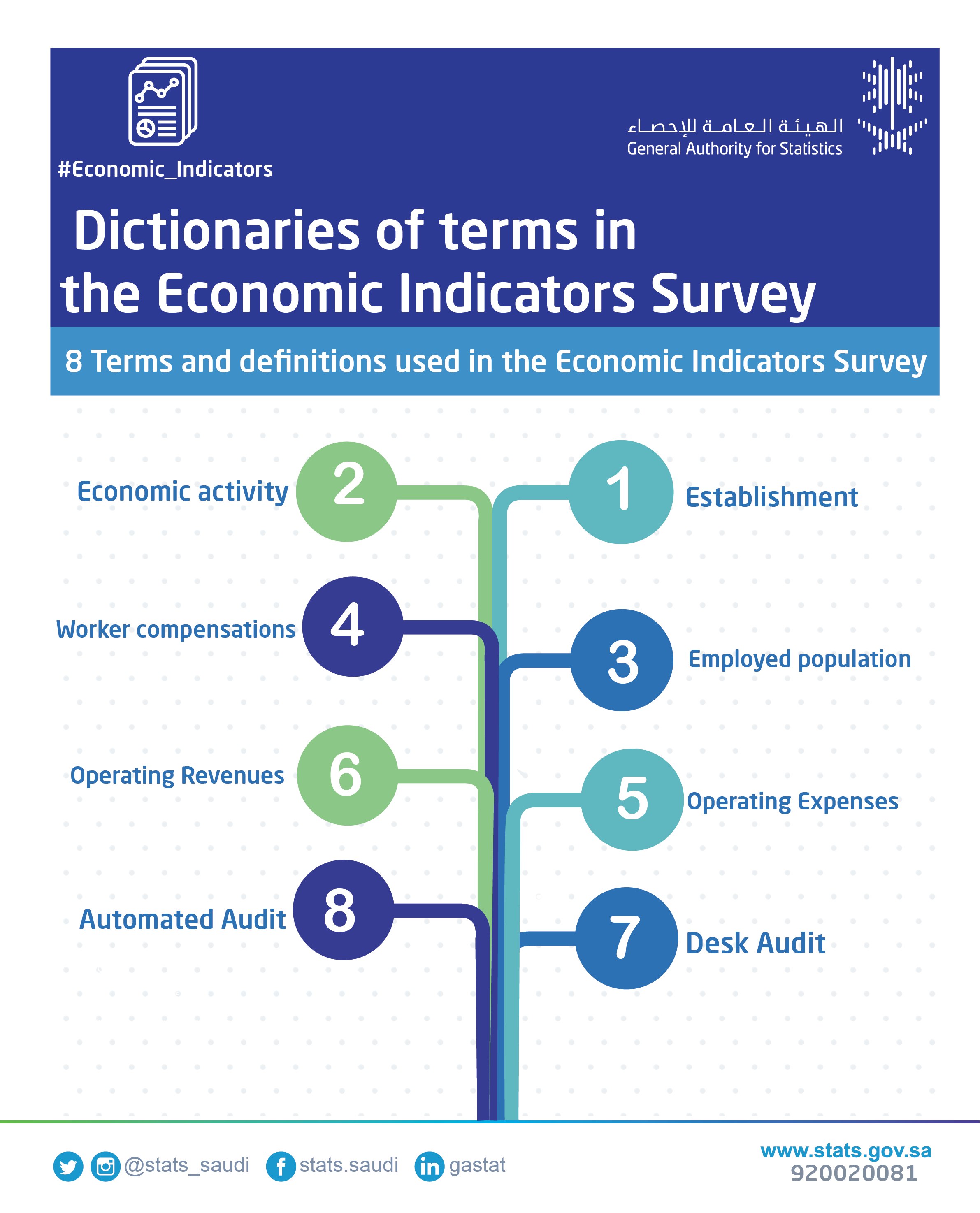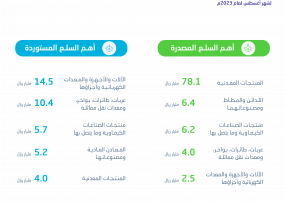Last update 28 / 11 / 2017
8 terms and definitions used in the Economic Indicators Survey

Establishment:
It is an economic entity with legal personality. It has a fixed location and carries out a certain economic activity. It is owned by one or a group of individuals, company, semi-government sector, or an establishment. The establishment is the smallest economic unit that may have data on workers, their remunerations, expenditure, revenues and capital formations.
Economic activity:
All activities performed or services provided by the establishment in return for consideration. Sometimes, the establishment gets nothing in return, such as charities that are financed by donations.
The classification of the institutional economic activity is based on the International Standard Industrial Classification (ISIC4). Still, minor changes are adopted to suit the establishments operating in Saudi Arabia.
The main activity of each establishment was given, during the survey, a six-digit economic classification code.
Employed population:
All individuals (Saudis and foreigners) who already work for the establishment with or without pay, as well as the owners, their affiliates and users, whether they are full-timers or part-timers, permanently or temporarily employed, males or females, whether they are paid on a daily, weekly or monthly basis. Workers also include partners and members of joint-stock companies, board chairmen and members, as well as workers on paid vacations.
Worker compensations:
The due regular amounts paid by the establishment to its workers throughout the year, such as wages and salaries payable in consideration of the normal working hours, fixed bonuses together with all benefits and allowances; e.g., accommodation and social insurance.
Operating Expenses:
All payments made by the establishment to practice an economic activity, whether purchased in the same year or taken from stocks purchased in previous years.
Operating Revenues:
All cash revenues earned by an establishment as a result of providing services for consumers, trading in goods in general, or practicing a main activity or other secondary activities, such as the sale and marketing of its products. The operating revenues also include the sales of goods purchased for the purpose of reselling them in the same condition, daily returns received in return for operations, total revenues of sales of manufactured products, other operating revenues that are not related to the main economic activity of the establishment but other secondary activities, such as revenues of industrial services and secondary activities, as well as revenues of selling manufacturing wastes and renting buildings, non-agricultural plots and machinery.
Desk Audit:
It is conducted by field researchers in two phases: the first phase is a field auditing that is conducted once the form is received from the respondent at the establishment's headquarters. The second is a desk auditing conducted at the GASTAT headquarters and is meant to verify the form, to make sure that the collected data are comprehensive and logical in accordance with predefined rules.
Automated Audit:
The automated audit procedures depend on the preparation of rules for the automated audit by entering programs into computers to make sure that data are within the accepted range or that there are no data of great importance with regard to information analysis such as (unavailability of an economic activity or data on expenditures or revenues, .. etc.)
Then, replacement of missing data would be implemented in three stages: the first stage is concerned with estimating the missing data from an establishment with the same business activity and the workers volume category (hot deck). The second stage depends on looking for the missing data of the same establishment in previous surveys. The third stage is concerned with setting up an average matrix according to the business activity and workforce and replacing the missing data with such averages. The National Directory of Economic Activities will be used in coding in accordance with the International Standard Industrial Classification.










